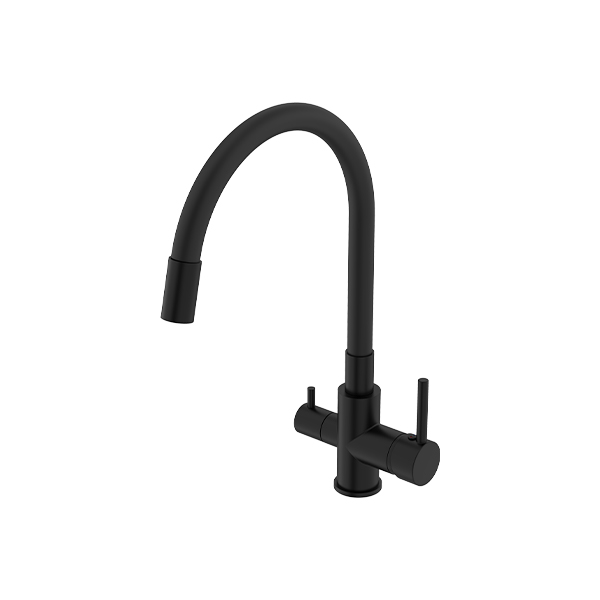Corrosion is the gradual degradation of metal caused by chemical reactions with moisture, oxygen, and other substances. For kitchen mixer taps, corrosion can rust spots, surface pitting, discoloration, and ultimately structural weakening. Given that pull out mixer taps involve moving parts and water contact, their surfaces are especially vulnerable.

Effective corrosion protection not only preserves the tap's appearance but also prevents leaks, improves hygiene by reducing microbial buildup on damaged surfaces, and minimizes maintenance costs.
Many pull out kitchen mixer taps are made from metals such as brass, stainless steel, or zinc alloys. Each material has inherent corrosion resistance to varying degrees:
Brass: Known for good corrosion resistance, especially when lead-free, brass is widely used for tap bodies. However, it requires additional surface treatments to enhance durability.
Stainless Steel: Offers natural corrosion resistance due to its chromium content, making it a popular choice for premium taps.
Zinc Alloys: Less corrosion-resistant and typically used for less expensive taps, requiring protective coatings to improve lifespan.
Regardless of the base material, surface treatments are essential to withstand kitchen environments.
Electroplating is one of the common corrosion protection methods for kitchen taps.
Process: A thin layer of metal, often chromium or nickel, is deposited onto the tap surface through an electrochemical process.
Benefits: This layer enhances corrosion resistance, provides a smooth and shiny finish, and improves scratch resistance.
Common Coatings: Chrome plating is particularly popular for its bright appearance and protective qualities. Nickel plating is often used as an underlayer for enhanced adhesion and corrosion protection.
Electroplated surfaces require precise control to avoid defects like peeling or uneven thickness.
Electropolishing is a chemical treatment primarily applied to stainless steel taps.
Process: The tap surface is immersed in an electrolytic bath that removes a thin layer of metal, smoothing microscopic roughness.
Benefits: This results in a highly polished, smooth surface that resists corrosion by reducing sites where contaminants can accumulate. It also improves cleanliness by making surfaces easier to clean.
Suitability: Electropolishing enhances the natural corrosion resistance of stainless steel without adding additional coatings.
Powder coating involves applying a dry powder that is then cured to form a hard, protective layer.
Process: The powder, often epoxy or polyester-based, is electrostatically sprayed onto the tap surface and baked at high temperature.
Benefits: Powder coatings provide corrosion resistance, color variety, and durability. They protect against chipping and wear better than many traditional paints.
Applications: While less common for pull out mixer taps due to the mechanical parts, powder coating is sometimes used on external components to improve resistance.
Passivation is a chemical treatment for stainless steel taps.
Process: The tap is treated with an acid solution that removes free iron from the surface and enhances the formation of a protective chromium oxide layer.
Benefits: This invisible oxide layer increases corrosion resistance and surface stability.
Importance: Passivation is crucial for maintaining stainless steel's corrosion resistance after machining or welding.
Practices for Corrosion Protection and Maintenance
Regular Cleaning: Use mild detergents and soft cloths to clean the tap surface regularly, avoiding abrasive cleaners that can damage protective layers.
Avoid Harsh Chemicals: Strong acids, bleach, or chlorine-based cleaners can degrade surface treatments, accelerating corrosion.
Dry After Use: Wiping the tap dry after use reduces water spots and mineral buildup that can cause corrosion over time.
Periodic Inspection: Check seals, joints, and coatings periodically for signs of wear or damage and address issues promptly.

 English
English Español
Español русский
русский

